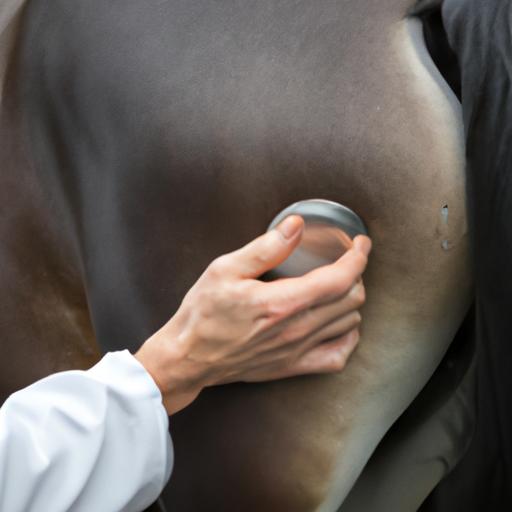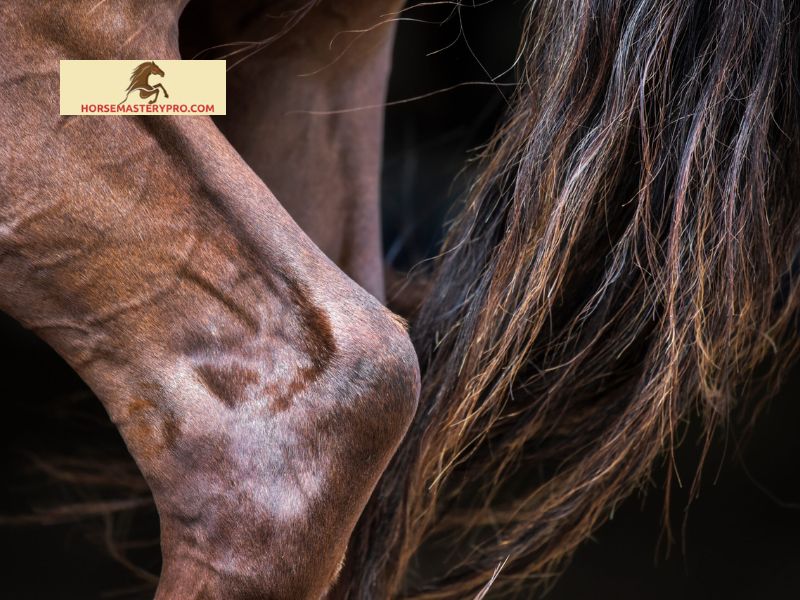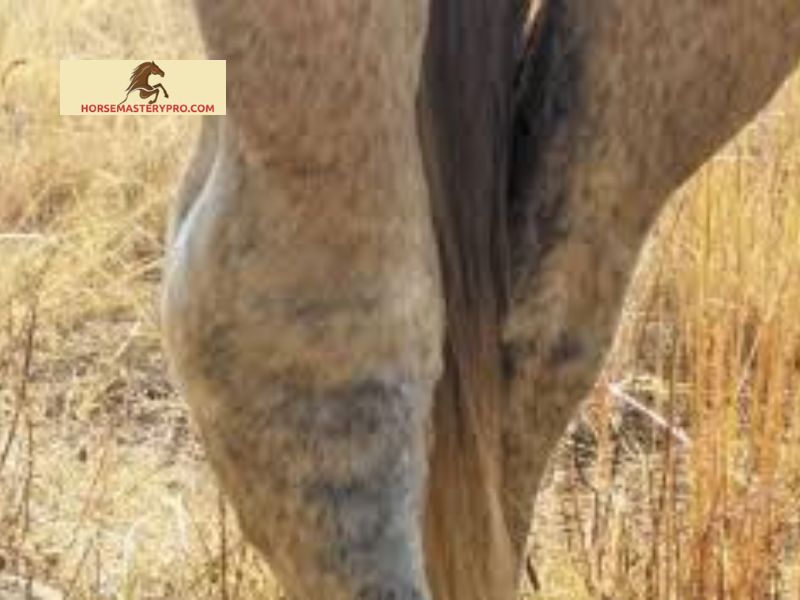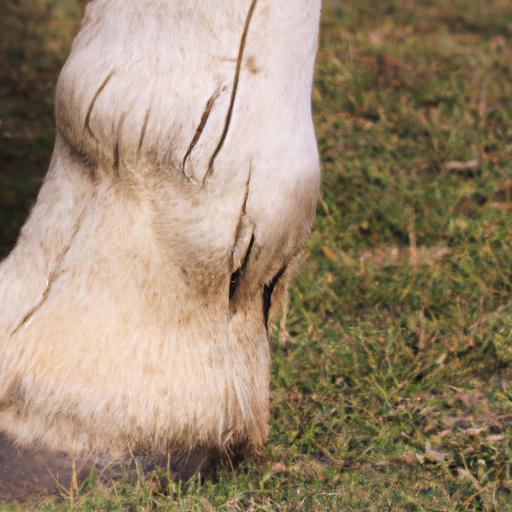Learn how to effectively manage arthritis in horses hocks. Explore non-surgical interventions, physical therapy, and surgical options for optimal joint health.
Arthritis in horses hocks is a condition that can significantly impact the overall well-being and performance of our equine companions. As horse owners and enthusiasts, it is essential for us to grasp the intricacies of this condition and learn how to effectively manage it. In this article, we will delve into the world of arthritis in horses hocks, exploring its causes, symptoms, and treatment options. By gaining a comprehensive understanding, we can ensure the optimal care and comfort of our beloved horses.
Arthritis, a degenerative joint disease, affects the hock joints of horses, which are critical for their mobility and agility. These joints, located in the hind legs, facilitate essential movements such as walking, trotting, and jumping. When arthritis develops in the hocks, it can lead to pain, stiffness, and decreased range of motion, negatively impacting the horse’s athletic abilities and overall quality of life.
Recognizing the importance of comprehending and managing arthritis in horses hocks is paramount. By doing so, we can address the condition proactively, providing our equine friends with the necessary support and care. Moreover, early detection and intervention can help prevent the progression of arthritis, preserving the horse’s joint health and ensuring their continued performance.
As we embark on this journey, let’s explore the various causes of arthritis in horses hocks, common symptoms to watch out for, and the diagnostic methods employed by veterinarians. By understanding the underlying factors contributing to this condition, we can take proactive measures to prevent its onset and protect our horses from unnecessary pain and discomfort.
Stay tuned as we delve deeper into the risk factors associated with arthritis in horses hocks and the preventive measures we can implement to safeguard their joint health. Remember, knowledge is power when it comes to the well-being of our equine companions. So, let’s embark on this enlightening journey together and ensure that our horses lead happy, healthy lives free from the burden of arthritis in their hocks.
Understanding Arthritis in Horses Hocks

Definition and Causes of Arthritis in Horses Hocks
Arthritis in horses hocks refers to the inflammation and degeneration of the hock joints, which can occur due to various factors. The hock joints, comprising the tarsal bones, are complex structures responsible for supporting the horse’s weight and facilitating movement. Over time, wear and tear, as well as repetitive stress, can lead to the breakdown of cartilage and the development of arthritis.
Several causes contribute to the onset of arthritis in horses hocks. One common cause is age-related degeneration, where the cartilage naturally deteriorates as a horse grows older. Additionally, certain breeds may be predisposed to hock arthritis due to their conformation, which can place excessive stress on the joints. Injury or trauma to the hock joints, such as fractures or sprains, can also increase the risk of developing arthritis.
Common Symptoms Observed in Horses with Hock Arthritis
Recognizing the signs of hock arthritis is crucial for early intervention and effective management. While symptoms may vary from horse to horse, there are some common indicators to look out for. Keep a keen eye for stiffness in the hind legs, especially during warm-up or after periods of rest. Horses with hock arthritis may exhibit a shortened stride, reluctance to engage in certain movements, and lameness on hard surfaces.
Swelling, heat, and tenderness around the hock joints are also common signs of arthritis. In some cases, you may notice the horse favoring one leg over the other or displaying difficulty while performing maneuvers that require hock flexibility, such as turns or jumps. These symptoms can progressively worsen if left untreated, affecting the horse’s overall performance and overall well-being.
Diagnostic Methods for Identifying Arthritis in Horses Hocks
When it comes to diagnosing arthritis in horses hocks, veterinarians employ various methods to ensure accurate identification. Physical examinations are conducted to assess the horse’s gait, observe any lameness, and examine the hock joints for swelling, heat, or tenderness. Radiographs (X-rays) can provide detailed images of the hock joints, revealing any abnormalities or signs of degeneration.
Furthermore, veterinarians may recommend additional diagnostic procedures such as ultrasound or arthroscopy to obtain a comprehensive assessment of the hock joints. These methods allow for a closer examination of the internal structures and can aid in determining the severity of arthritis. By utilizing these diagnostic techniques, veterinarians can formulate an appropriate treatment plan tailored to the horse’s specific needs.
Stay tuned as we explore the risk factors associated with hock arthritis and the preventive measures that can be taken to safeguard our horses’ joint health. Understanding the causes, symptoms, and diagnostic methods is the first step in effectively managing and caring for horses with arthritis in their hocks.
Risk Factors for Arthritis in Horses Hocks

Age and Breed Predispositions
When it comes to arthritis in horses hocks, age and breed can play significant roles. Older horses are more prone to developing this condition as the wear and tear on their joints over time can lead to degeneration. Additionally, certain breeds may have a higher predisposition to hock arthritis due to their conformation or genetic factors. Being aware of these age and breed-related risk factors allows us to take proactive measures to monitor and manage the joint health of our horses.
Conformational Factors that Can Contribute to Hock Arthritis
The conformation of a horse’s hocks can also influence their susceptibility to arthritis. Poor conformation, such as sickle hocks or cow hocks, places excessive stress on the hock joints, accelerating the wear and tear process. It is crucial to assess a horse’s conformation and be mindful of any potential structural abnormalities that may contribute to the development of arthritis. By identifying these conformational issues early on, we can take preventive measures and provide the necessary support to alleviate strain on the hock joints.
Overuse or Repetitive Strain on Hock Joints
Overuse or repetitive strain on the hock joints can be another significant risk factor for arthritis. Horses engaged in intense activities such as jumping, racing, or demanding workloads are more susceptible to hock arthritis due to the repetitive stress placed on their joints. It is essential to strike a balance in their exercise routines, allowing for adequate rest and recovery periods. By implementing appropriate training regimens and monitoring the workload on their hocks, we can minimize the risk of overuse and mitigate the development of arthritis.
Understanding these risk factors associated with arthritis in horses hocks empowers us to take proactive measures in preventing and managing this condition. By considering age and breed predispositions, evaluating conformational factors, and being mindful of overuse or repetitive strain on hock joints, we can ensure the optimal joint health of our equine companions and enable them to thrive. Stay tuned as we explore preventive measures and treatment options to further enhance our knowledge in managing arthritis in horses hocks.
Preventive Measures for Arthritis in Horses Hocks

A. Proper Nutrition and Diet for Joint Health
Maintaining a balanced and nutritious diet is crucial for promoting joint health in horses and preventing the onset of arthritis in their hocks. Including key nutrients such as omega-3 fatty acids, glucosamine, and chondroitin in their diet can help support joint function and reduce inflammation. Foods rich in these nutrients, such as fish oil, flaxseed, and green-lipped mussels, can be incorporated into their feeding routine.
Furthermore, ensuring that your horse’s diet includes a sufficient amount of high-quality forage and a balanced ratio of calcium and phosphorus is essential. Consulting with a veterinarian or equine nutritionist can help determine the specific dietary requirements based on your horse’s age, breed, and activity level. A well-rounded and tailored diet will contribute to the overall joint health of your horse.
B. Regular Exercise and Conditioning Routines
Just like humans, horses benefit greatly from regular exercise and conditioning to maintain their joint health. Engaging in activities that promote flexibility, strength, and range of motion can help prevent the onset of arthritis in their hocks. Incorporate a variety of exercises into their routine, including lunging, walking, trotting, and hill work.
However, it is important to strike a balance between exercise and rest, particularly if your horse is prone to joint issues. Overexertion or excessive stress on the hock joints can lead to increased wear and tear, potentially exacerbating the development of arthritis. Consulting with a knowledgeable trainer or equine professional can help design a suitable exercise program tailored to your horse’s individual needs.
C. Appropriate Hoof Care and Trimming Techniques
Proper hoof care plays a significant role in maintaining the overall soundness and joint health of horses. Regular hoof trimming and maintenance help distribute weight evenly across the limbs, reducing the strain on the hock joints. Work closely with a qualified farrier to ensure that your horse’s hooves are balanced and properly trimmed to minimize the risk of uneven pressure and subsequent joint issues.
In addition to routine trimming, consider the use of supportive hoof supplements and pads to provide extra cushioning and protection for the hocks. These measures can help absorb shock and reduce the impact on the joints during movement. Remember, investing in proper hoof care is an investment in your horse’s long-term joint health.
By implementing these preventive measures, we can significantly reduce the likelihood of arthritis developing in our horse’s hocks. A holistic approach that encompasses nutrition, exercise, and hoof care will lay the foundation for optimal joint health, allowing our equine companions to thrive and perform at their best. Stay tuned as we explore the various treatment options available for horses already affected by arthritis in their hocks.
Managing Arthritis in Horses Hocks
Managing arthritis in horses hocks requires a collaborative effort between horse owners and veterinarians. By working together, we can develop a customized treatment plan that addresses the specific needs of our equine companions. Let’s explore some essential strategies for effectively managing arthritis in horses hocks.
Collaborating with a Veterinarian
When it comes to managing arthritis in horses hocks, it is crucial to consult with a knowledgeable and experienced veterinarian. They can assess the severity of the condition, provide expert guidance, and recommend appropriate treatment options. By collaborating with a veterinarian, you can ensure that your horse receives the best possible care tailored to their specific needs.
Monitoring and Adjusting the Treatment Plan
Arthritis in horses hocks is a dynamic condition that may require adjustments to the treatment plan over time. Regular monitoring of your horse’s progress is vital to identify any changes in their condition. This allows you and your veterinarian to make necessary modifications to the treatment plan, ensuring that it remains effective in managing the symptoms and promoting joint health.
Regular Veterinary Check-Ups and Ongoing Care
Regular veterinary check-ups are essential for horses with arthritis in their hocks. These visits allow the veterinarian to assess the horse’s overall well-being, monitor the progression of the condition, and make any necessary adjustments to the treatment plan. Additionally, ongoing care such as routine vaccinations, dental examinations, and proper hoof care contribute to the overall health and comfort of the horse.
In conclusion, managing arthritis in horses hocks requires a comprehensive and proactive approach. By collaborating with a veterinarian, monitoring and adjusting the treatment plan as needed, and providing regular veterinary check-ups and ongoing care, we can effectively manage this condition and ensure the well-being of our equine companions. Remember, your horse’s comfort and quality of life are paramount, so make managing arthritis in their hocks a top priority. For more valuable information on horse health and care, visit horsemasterypro.com


